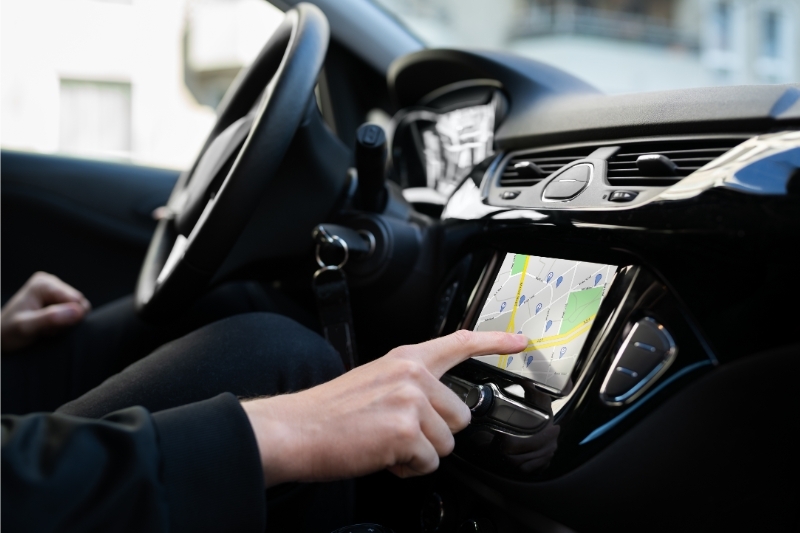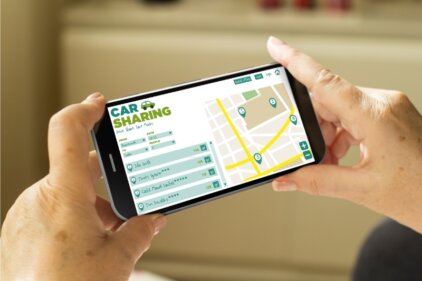From the early days of bulky, standalone GPS devices to the seamless integration of GPS functionality in our smartphones, the landscape of car navigation has undergone a remarkable transformation. In this article, we will explore the benefits of using a paid GPS for cars, the differences between free and paid options, and ultimately, determine whether investing in a paid GPS is worth the effort.
The Benefits of Using a GPS for Cars
The global positioning system (GPS) has become an indispensable tool for modern-day drivers. By providing turn-by-turn directions, real-time traffic updates, and a wealth of additional features, a GPS can significantly enhance the driving experience. Some of the key benefits of using a GPS for cars include:
- Improved Navigation: A dedicated GPS device offers more accurate and reliable navigation compared to relying solely on smartphone apps or in-car infotainment systems. The GPS hardware and software are optimised for seamless navigation, ensuring you reach your destination efficiently.
- Hands-free Operation: Many paid GPS devices come with voice-controlled features, allowing you to input destinations, adjust settings, and receive updates without taking your hands off the steering wheel. This enhances safety and reduces driver distraction.
- Offline Functionality: Paid GPS options often offer the ability to download maps and route information for offline use, ensuring you can navigate even in areas with poor or no cellular coverage.
- Advanced Features: Paid GPS devices may include features such as live traffic updates, speed limit alerts, points of interest (POI) databases, and integration with other in-car systems, providing a more comprehensive and tailored driving experience.
Differences between Free and Paid GPS Options
While there are numerous free GPS options available, such as Google Maps and Apple Maps, paid GPS devices offer a distinct set of advantages. Here are some of the key differences:
- Map Updates: Paid GPS devices typically receive more frequent map updates, ensuring the information remains current and accurate. Free apps may rely on user-generated data or slower update cycles, leading to potentially outdated maps.
- Real-time Traffic Data: Paid GPS options often integrate with comprehensive traffic data sources, providing more accurate and up-to-date information on road conditions, construction, and congestion.
- User Interface and Experience: Paid GPS devices are designed with a focus on user experience, offering intuitive interfaces, customisable settings, and a more seamless navigation experience compared to free apps.
- Offline Capabilities: As mentioned earlier, many paid GPS devices allow for offline map storage and navigation, making them a more reliable option in areas with poor cellular coverage.
- Advanced Features: Paid GPS devices may offer additional features such as lane guidance, speed limit warnings, and voice control, which can enhance the overall driving experience.
Factors to Consider when Choosing a Paid GPS for Cars
When selecting a paid GPS for your car, there are several factors to consider to ensure you make an informed decision:
- Device Compatibility: Ensure the GPS device is compatible with your vehicle’s make, model, and year, as well as any existing in-car infotainment systems.
- Map Coverage and Updates: Investigate the GPS provider’s map coverage and the frequency of map updates to ensure you have access to the most up-to-date information.
- User Interface and Ease of Use: Evaluate the GPS device’s user interface, including the ease of inputting destinations, accessing features, and interpreting the information displayed.
- Additional Features: Consider the advanced features offered by the GPS device, such as live traffic updates, voice control, and integration with other in-car systems.
- Battery Life and Power Options: Assess the device’s battery life and power options, ensuring it can provide uninterrupted navigation during your drives.
- Customer Reviews and Ratings: Thoroughly research customer reviews and ratings to gauge the overall performance, reliability, and user satisfaction with the GPS device.
- Cost and Value: Weigh the cost of the GPS device against the features and benefits it offers, ensuring it aligns with your budget and driving needs.
Top Paid GPS Brands and Models
When it comes to paid GPS options for cars, several reputable brands have established themselves as leaders in the market. Here are some of the top paid GPS brands and models to consider:
- Garmin: Garmin is a well-known brand in the GPS industry, offering a wide range of devices such as the Garmin DriveSmart 65 and the Garmin RV 785 GPS Navigator.
- TomTom: TomTom is another prominent player in the GPS market, with popular models like the TomTom GO Discover and the TomTom GO Premium.
- Magellan: Magellan is a respected GPS brand that offers devices like the Magellan RoadMate 6630T-LM and the Magellan RoadMate 6630-LM.
- Rand McNally: Rand McNally is known for its comprehensive GPS devices, including the Rand McNally OverDryve 8 Pro and the Rand McNally TND 740.
- Nextbase: Nextbase is a relatively newer brand in the GPS market, but it has gained attention with models such as the Nextbase 522GW and the Nextbase 422GW.
It’s important to research the features, performance, and customer reviews of these and other paid GPS options to determine the best fit for your driving needs and preferences.
Customer Reviews and Ratings of Paid GPS Devices
To gain a comprehensive understanding of the performance and user satisfaction of paid GPS devices, it’s essential to review customer feedback and ratings. Here’s a summary of what I’ve found:
Garmin DriveSmart 65
- Average rating: 4.6 out of 5 stars
- Customers praise the device’s intuitive interface, accurate navigation, and comprehensive traffic updates.
- Some users mention occasional connectivity issues and the need for frequent map updates.
TomTom GO Discover
- Average rating: 4.4 out of 5 stars
- Customers highlight the device’s sleek design, voice control features, and reliable real-time traffic information.
- A few users report occasional routing errors and challenges with the mobile app integration.
Magellan RoadMate 6630T-LM
- Average rating: 4.3 out of 5 stars
- Customers appreciate the device’s large display, lifetime map updates, and extensive POI database.
- Some users mention difficulties with the user interface and occasional software glitches.
Rand McNally OverDryve 8 Pro
- Average rating: 4.1 out of 5 stars
- Customers highlight the device’s advanced features, such as voice control, dashcam integration, and comprehensive traffic data.
- A few users report concerns with the device’s durability and occasional connectivity problems.
Nextbase 522GW
- Average rating: 4.5 out of 5 stars
- Customers praise the device’s high-quality display, seamless integration with smartphone apps, and reliable navigation.
- Some users mention the need for improved voice control functionality and occasional issues with map updates.
By reviewing these customer insights, you can gain a better understanding of the strengths and potential drawbacks of each paid GPS device, helping you make a more informed decision.
Cost Comparison of Paid GPS Devices
When it comes to the cost of paid GPS devices for cars, there is a range of options to consider. Here’s a table comparing the prices of some of the top models:
| GPS Device | Average Price |
|---|---|
| Garmin DriveSmart 65 | $199.99 |
| TomTom GO Discover | $249.99 |
| Magellan RoadMate 6630T-LM | $179.99 |
| Rand McNally OverDryve 8 Pro | $299.99 |
| Nextbase 522GW | $149.99 |
It’s important to note that prices may vary depending on sales, promotions, and the specific retailer or online marketplace. Additionally, some GPS devices may offer subscription-based services or additional features that can impact the overall cost.
When considering the cost, it’s essential to weigh the features, performance, and user reviews of each GPS device to ensure you’re getting the best value for your investment.
How to Install and Set Up a Paid GPS for Cars
Setting up a paid GPS device in your car is generally a straightforward process, but it’s important to follow the manufacturer’s instructions carefully. Here’s a step-by-step guide to help you get started:
- Unboxing and Inspection: Carefully unpack the GPS device and ensure all the necessary components, such as the mount, power cable, and user manual, are included.
- Mount the Device: Securely attach the GPS device to your car’s dashboard or windshield using the provided mount. Make sure the placement allows for easy visibility and accessibility while driving.
- Power Connection: Connect the GPS device to your car’s power source, either through a USB port or the included power adapter. Ensure the cable is routed neatly to avoid any interference or safety hazards.
- Initial Setup: Turn on the GPS device and follow the on-screen instructions for the initial setup process. This may include connecting the device to your Wi-Fi network, setting up your user profile, and customizing the device’s settings.
- Map and Software Updates: Check for any available map and software updates for your GPS device, and follow the instructions to download and install them. Keeping your GPS up-to-date is crucial for accurate navigation and optimal performance.
- Address and Destination Entry: Familiarize yourself with the process of entering addresses, points of interest, and other destinations into the GPS device. This will ensure you can quickly and easily navigate to your desired locations.
- Voice Control and Settings: Explore the voice control features and customize the device’s settings to your preferences, such as route preferences, traffic alerts, and language options.
- Integration with Other Systems: If your vehicle has an in-car infotainment system, check if the GPS device can be integrated for a seamless driving experience.
By following these steps, you can have your paid GPS device set up and ready to use in your car, ensuring a smooth and efficient navigation experience.
Tips for Using a Paid GPS Effectively
To make the most of your paid GPS device, consider the following tips:
- Familiarize Yourself with the Device: Take the time to explore the device’s features, settings, and user interface. This will help you navigate more efficiently and take advantage of the advanced capabilities.
- Keep Maps and Software Updated: Regularly check for and install any available map and software updates to ensure your GPS device has the most current information.
- Utilize Voice Control Features: Take advantage of the voice control capabilities to input destinations, adjust settings, and receive information without taking your eyes off the road.
- Leverage Traffic and Routing Alerts: Pay attention to the real-time traffic updates and route suggestions provided by your GPS device, and be prepared to adjust your driving accordingly.
- Customize Settings for Your Needs: Tailor the device’s settings, such as route preferences, safety alerts, and POI filters, to align with your driving habits and preferences.
- Integrate with Other In-Car Systems: If your vehicle supports it, explore the integration of your GPS device with the in-car infotainment system for a more seamless driving experience.
- Backup and Protect Your Device: Consider backing up your device’s data and protecting it from damage, such as using a protective case or mount.
- Provide Feedback to the Manufacturer: If you encounter any issues or have suggestions for improvement, don’t hesitate to provide feedback to the GPS device manufacturer. This can help them enhance the product and user experience.
By following these tips, you can unlock the full potential of your paid GPS device and enjoy a more efficient, safe, and enjoyable driving experience.
Conclusion: Is Investing in a Paid GPS for Cars Worth the Effort?
After thoroughly exploring the benefits, features, and considerations surrounding paid GPS devices for cars, We believe that investing in a paid GPS can be a worthwhile effort for many drivers.
The advanced features, such as accurate real-time traffic updates, offline navigation capabilities, and comprehensive POI databases, can significantly enhance the driving experience and provide a level of convenience and reliability that free GPS apps may not always offer.
Moreover, the seamless integration with in-car systems, voice control functionality, and the focus on user experience make paid GPS devices a valuable asset, particularly for frequent drivers or those who rely on navigation for their daily commutes or long-distance travels.





